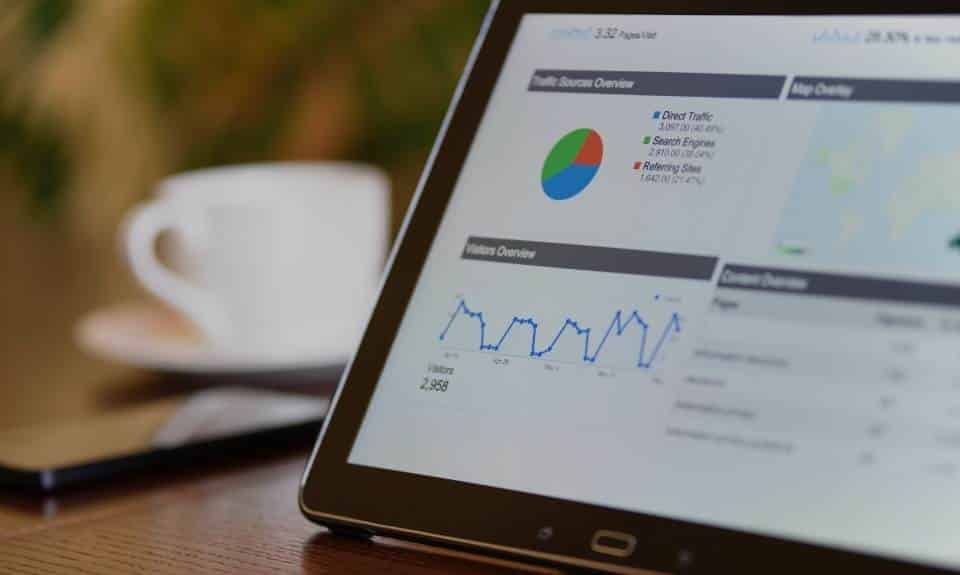Why you should have a business continuity plan
Keeping your business operational is a full-time job. It’s a balancing act that requires you to keep a multitude of plates spinning, while your executive team and employees support you at every stage of the operational journey. But what happens if these plates stop spinning?
Sudden unexpected threats can catch you on the hop. What if an unexpected circumstance comes up that derails your usual operational procedures? How will you cope? What will you do to overcome the issue? And how will you get the business back on target?
The answer lies in having a thorough business continuity plan.
What’s a business continuity plan?
A business continuity plan is an executive plan that describes the risks that exist in the business, your strategy for dealing with these known and unknown risks, and how you will mobilise your team to overcome any issues, emergencies or gaps in trading etc.
None of us truly knows what lies around the corner. Most businesses were not expecting the 2008 economic crash, or the 2020 Covid-19 pandemic. If you can plan ahead and put contingency plans in place, you'll be better prepared when a worst-case scenario does appear.
How do you formulate your plan?
Every organisation’s business continuity plan will be different. We all have different business models, different company hierarchies and different risks that are peculiar to our own sectors.
But the fundamental basis on which you create your business continuity plan will be the same however your company works.
For example:
- Identify the critical areas of your business – look at your operational business model and think about where it’s most likely to break down under pressure. Are you reliant on a specific supplier to operate? Which are the fundamental departments in your model and what do they bring to the business? Who are your core heads of department and staff, and who could deputise for them in their absence? In short, look for anything that could break down and how this could affect the whole business.
- Create back-up continuity plans for each critical area – you obviously need your main continuity plan to cover the entire business. But it’s also important to look at the risks, essential personnel and key operational activities for each separate department in the company. Your finance team will need a very different continuity plan to your logistics and delivery team, for example. So, tailor each continuity plan to fit the needs of your main business areas, and make sure they’re all fit for purpose.
- Assign a continuity lead and department leads – it’s a good idea to assign a main business continuity lead role or champion, so the responsibility for reviewing and updating the plan sits under someone’s remit. You’ll also need to have a lead person for each critical department, so every cog in the wider machine is represented.
- Make sure everyone knows the continuity plan – a business continuity plan is useless unless the whole company is aware of the plan and knows what to do. Have a central phone number, WhatsApp group and email address set up for any business continuity emergency. And use your internal communications team to provide regular messaging, training and updates on changes to the ongoing continuity plan.
- Keep the business operating – ultimately, your continuity plan exists to keep the company operating in challenging times. It could be that your HQ is flooded out and has to be closed down and moved to an alternative location. It may be that significant employee sickness hits you, leaving only a skeleton staff to run each department. Whatever the circumstances, your plan needs a contingency in place, so you and your remaining staff can continue to trade, make sales and bring in revenues.
Talk to us about building a business continuity plan
No plan can completely remove the threat of the unknown – that’s an impossibility. But with a continuity plan that’s well-conceived and ready to implement, you reduce the potential risks and give you and your team a practical strategy and tactics to work with.
Need to get a plan in place?
We’ll help you analyse your business model, look for the critical areas and assess the potential risks. We’ll also help you put together a watertight business continuity plan that’s ready to implement if (and when) specific threats hit the business.
Business tips: Have you achieved your goal for the business?
Founding, managing and growing a business is a BIG commitment. For most business owners, it will take years to build a customer following, turn a profit and create a truly scalable business. It's a journey that can sometimes be pressurised, stressful and risky. – But when your plan really does come together, there is the chance of real success, a lasting legacy and a business that delivers on your initial dream.
So, how do you know when you've truly achieved your goals for the business?
Has the business met its growth targets and scaled up as intended?
You’ll have seen your business idea grow from being a fledgling startup, to an established business and on to become a scaled-up, ambitious enterprise with a solid customer base.
If you’ve met these growth targets, then you know you’re on pretty solid ground as a business. Your idea clearly has legs and you’re delivering a product and/or service that your customers see as valuable – and which they’re willing to part with their hard-earned cash to purchase.
Are you running a profitable enterprise that's in good financial shape?
Running a tight financial ship is crucial. You need solid revenues, positive cashflow and good liquidity to keep your business ticking over.
In the early days of being a startup, cash will have been tight. And your own personal income as a founder and director will probably have been scarce too. But as the business has become more established, you should have found that your business revenue became more stable and predictable – and that your own personal wealth also followed this same reliable pattern. If the business has a solid balance sheet, great cashflow and meets your intended profit targets, you’re onto a good thing – and can be sure that your financial position is in good shape.
Do you have a stable customer base who say good things about you?
Without customers, you don’t have a viable business. Finding your first customers as a startup was probably a significant turning point in your journey. A good customer base brings with it the bonus of new sales, fresh revenues and a business that can actually turn a profit.
When customers engage with you and buy your goods and services, that comfirms your original faith in your business idea. You’re providing something they value and want to purchase, and you’re also building a community of like-minded people who all think your brand is great.
Do you have a team who can operate the business without you?
In the early days, you’ll probably have become a jack (or jill) or all trades. You’ll have run the sales and marketing campaigns, taken care of all the main operational tasks and dealt with the many invoicing, accounting and bookkeeping tasks. Turn the clock forward, and you probably have a team of people around you to take care of these jobs – but could they function with you?
This is really the acid test of whether you’ve scaled and succeeded. If the business is still reliant on you, personally, you have a problem. To be a saleable proposition, a business needs to function effectively without the founder. If not, you’ll never be in a position to sell up. To make this possible, you need a team of engaged and talented people around you – people who share your vision and talents and who can keep the ship on an even course, even once the original captain has set sail on fresh, new adventures.
Do you feel you've achieved what you wanted to achieve?
In your formative years as a founder, you’ll have sat down to draw up a startup plan. In that plan you’ll have outlined a clear vision for what this business was going to achieve.
This vision might have been:
- To scale up over five years, sell-up and retire
- To deliver a new kind of technical widget and make it the global standard
- To help your target audience improve their lives, helped by your product/service
- To provide the income needed for you to live your desired lifestyle
- To plough your profits back into the local community and be a force for good.
We all have different goals, and whether they are financial, personal or moral comes down to the individual. The important thing at this point is to assess whether you’ve actually met the vision that you set out to achieve. If your aim was to sell for a profit and then retire, are you ready to do this? If the goal was to become a household name and move your sector forward, do your customer engagement figures and market share stats reflect this?
Deep down, only you and your fellow founders know whether you’ve truly met your intended goal. But if the general consensus is that you aced it, then it’s time to think about the future.
What’s the next chapter in your business story?
If you can answer yes to all five of these questions, then congratulations! You've built a successful, stable and profitable business.
But what do you do now? Do you continue to plough this fertile furrow and live off the profits? Do you find a buyer for the existing business and start on your next business idea? Or do you sell up and look at retirement and enjoying the benefits of your money and lifestyle?
It's a good idea to talk to us before you make what is, essentially, a life-changing decision. If you’d like to talk through your options, do get in touch.
Business tips: Trading in a different country
To successfully set up your export business, you'll need to do your research. This means talking to your accountant, advisers and other business owners in your network so you don't enter the market without enough preparation. With the right planning and organisation, you set the best possible foundations for moving into a brand-new international market.
Create an export plan
When you take the big step of going international, having a plan is going to help immeasurably. Writing an export plan gives you a route map to follow and helps to explain to investors, funding providers and your existing home team WHY you’re looking to expand out into a new country.
As a starting point:
- Explain your business reasons for trading in this new territory
- Give a detailed explanation of your supply chain and how it will work
- Outline your strategy for finding customers, making sales and generating revenue
- Summarise the costs of going international and where you hope to find the funding
- Give an overview of the company’s current financial health and cashflow position
- Set your initial targets for the first year and your timescales for achieving them.
Check if you need an export licence
It’s possible that you’ll need an export licence in your home country to trade over country borders. This will depend on what goods you're exporting, whether they are on any controlled lists and whether there’s an existing trade agreement with your target county.
Free trade agreements (FTAs) may exist between your home country and your export country, reducing or removing some of the regulatory hurdles required to trade between those two territories.
Understand your Tax liability
According to the OECD, 170 countries and territories have some form of Value-Added Tax (VAT) or Goods and Services Tax (GST). These consumption taxes are added to non-essential goods and are paid by the consumer as part of the price they pay at the till.
Knowing whether you’ll need to charge and pay VAT/GST in your new territory is an important consideration. Countries will charge VAT/GST at different rates, on different goods and services. So, it’s important to talk to a specialist who can advise you on how to deal with VAT/GST when trading across borders in your new country.
Move to multi-currency accounting software
If you’ve only traded in your home nation, your finances will have been managed in a single currency up to this point. Unless you’re operating in a trading block with one standard currency (like the EU), the likelihood is that your new export location will use a different currency.
Whether your new location trades in US dollars, euros or Japanese yen, your accounting software needs to be able to deal with transactions in your home currency and your new international currency. Most of the major cloud accounting platforms will offer a multi-currency subscription, giving you the ability to account in multiple currency types.
Find the best way to get paid in a new currency
When you make your first sales in your international territory, you’ll also need a way to take payment in this new currency. With cashless card transactions now so common in many parts of the world, this is less of an issue than it used to be. However, you will need a bank account that uses your new currency and some means of converting funds into your home currency.
International bank accounts with foreign exchange (forex) capabilities make this easier. Providers like Wise Business, OFX or Revolut, give you the option to collect payments in one currency and then export it in your home currency. This makes the forex process much simpler and also much more cost-effective, with rates usually far lower than those your high-street bank would charge for forex transactions.
Market your brand to a new audience
A key step will be marketing your brand to consumers in this new country, or finding other businesses to sell to directly. Remember, you’re starting from scratch when it comes to brand awareness and advocacy, so it’s important to do as much research as possible.
Questions to ask include:
- Is there a need for your goods and services in this new market?
- Who are the current brand leaders and your direct competitors?
- How will you differentiate your goods in a crowded market?
- Do you have the resources to create marketing content in a second language?
Remember to also check on cultural sensitivities in your new country. Do you understand the cultural, social and religious differences between your home nation and your new territory? Using the wrong words, phrases or colours in your marketing could be disastrous, so learn as much as possible about your new country and get to know the local traditions.
Going international is a significant step for your business. We can help you draw up an export plan and get your tax and accounting ready for operating in a new territory.
Talk to us about writing your export plan.
Keeping your data safe as a remote worker
Using public WiFi in cafes, hotels and coffee shops is something we all do. It’s convenient and gives you the benefits of working online wherever you happen to be. But are you aware of the data security issues of working from a public network?
In an age where remote and hybrid working are now the norm for so many employees and self-employed people, it’s important to know the key ways to keep your data safe
Secure ways to work from a public network
Remote working is a flexible approach to work that’s increased in popularity hugely over the past few years. A recent study from Buffer found that 97% of people would like to continue working remotely, at least some of the time, for the rest of their career.
Working remotely is here to stay, it would seem. But what can you do to make sure you’re applying the best possible security protocols? And what are the key dangers to look out for?
We’ve highlighted the important elements of cyber safety to be aware of:
- Unencrypted public networks and their flaws – a public network isn’t a safe environment when working. When you use your home network, only you and your family have access to the WiFi. If you log into a public network, literally anyone can join the network – and this can lead to all kinds of security issues and concerns.
- Malware and other suspicious activity – hackers and those with malicious intent will see a public network as a potential backdoor to your data. Malware (malicious software), Trojan horses and other hostile programmes can be easily uploaded to your device, allowing hackers to access your programmes, hard drive and data.
- Using a personal VPN to access the internet – if you’re using a public network to work, the chances are that you have access to confidential information and customer data via your device. To protect your device, it’s important to use a VPN (virtual private network). This creates a secure network for you, so you can safely share and access your important data, with fewer worries about hackers and malware etc.
- Having proper security software on your device – it’s a good idea to also have cyber security software installed on your computer or smart device. Providers like Norton, McAfee and Kaspersky all offer complete internet security suites that include firewalls, regular scans of your drive and other tools to keep your data safe and sound.
- Keeping up to date with the latest threats – no security system is 100% safe. But you can do a lot to improve your internet security by being aware of the current threats. Keep an eye out for news stories about cyber breaches and read the updates and social posts from your internet security provider. The more you’re in the loop about present dangers, the more you can do to update your security arrangements and keep your devices safe.
Start improving your internet security
We’ve all enjoyed the additional flexibility and time-saving benefits of working from somewhere other than the office. But as remote working becomes a standard working practice, it’s vital to improve your internet security and be more aware of the potential threats to your data.
Minimum wage and award minimums are set to rise July 1st
The Fair Work Commission’s annual wage review has resulted in two announcements made this week:
- The National Minimum Wage will increase by $40 per week, (an increase of 5.2%) from 1 July 2022
- award minimum wages will increase by 4.6%, which is subject to a minimum increase for award classifications of $40 per week and based on a 38-hour week for a full-time employee.
Costs are increasing
In July 2022, the superannuation guarantee statutory rate will rise 0.5 per cent to 10.5%.
In addition to the rising cost of labour, inflation is forecast to put upward pressure on everyday items. That will likely increase your general running costs and the price of materials. Petrol prices are up, for instance, and supply chain issues have driven up the cost of many imported products.
Time to review your pricing
Is it time to put your prices up? Ideally, your business should increase costs by a tiny amount each year, rather than by a big jump every five years, for instance. Small increases help prevent price shocks for customers, and keep your business in line with the rest of the market.
Can you also cut costs?
If you don’t think increasing your prices is an option, or you still need to make more of a change, you may need to cut back your spending. We look at your business line by line, so we can help you identify areas where you might be able to trim the fat.
Give us a call or drop us a note – we’re here to help.
How Virtual CFOs Can Leverage RPA Software to Automate Small Business
The overarching purpose of Robotic Process Automation (RPA) is to automate manual, repetitive, and low-value tasks. Implementing RPA software and systems can streamline a business’s day-today operations, giving back valuable hours to business owners, and enable key staff to work on more high-priority initiatives that are frequently put on hold due to the inability of resources to keep up with the pace of manual work. Some examples how RPA is used by SMBs:
- Entering sales orders,
- Account reconciliation
- Managing vendors,
- Generating purchase orders,
- Creating and following-up invoices,
- Generating financial reports, and much more
Promote Financial Data Accuracy
There are a lot of monotonous tasks in an accounting or finance function (such copying and pasting data across spreadsheets), and plethora of financial reports to create which – if done incorrectly – can lead to potentially huge impacts on the financial position of a business with massive consequences. Companies lose millions annually due to poor data quality because workers must adjust to inaccurate information and create workarounds. The effects of poor data quality may be felt throughout an organisation, forcing systems that rely on that data to change as a result. When a vendor’s information is not entered in a standard format, it can lead to extra work in other areas, such as purchasing, invoicing, payments, and reporting. Data quality may be ensured at the time of data gathering by using RPA to standardise data entry and check data.
Improve Productivity and Reducing Operating Costs
Virtual CFOs continually seeking to streamline and improve the efficiency of finance and accounting activities for small businesses, so that business owners can focus more on growth opportunities and gaining a competitive advantage in the market. Streamlining operations increases a business’s responsiveness to change, allowing it to quickly spot competitive disruptions and market changes, then respond and navigate to meet customer needs and profit target.
RPA for Growth and Scale
RPA implementations and optimisations of growing businesses typically start in the financial and accounting teams – where automating routine tasks frees up finance departments to focus on strategic initiatives and gives a CFO the operational flexibility to scale or pivot as needed. The CFO is elevated to the role of strategic business partner than a traditional accountant – this is why a Virtual CFO is a critical role for small businesses without an in-house finance team.
Improving the Value of Key Performance Indicators (KPIs)
The lack of numbers to support where staff spend their time, processing times, and volumes is a common problem we encounter when automating finance and accounting departments. With RPA in place, businesses can examine employee time utilisation in great detail. Because of the many flaws inherent in manual business processes, we reengineer them for automation in order to make them more effective and efficient.
RPA also offers monitoring of process metrics such as throughput, cycle time, cost, and exceptions. However, knowing how well processes are being conducted through operational data is necessary for isolating and evaluating exceptions, which may lead to additional improvements in process efficiency.
Speak with Philip Khao from Solve Accounting on 0412651779 or at philip@solveaccounting.com.au to find out more about your potential business opportunity.
Philip Khao is a Chartered Accountant (CA), Virtual CFO professional and Director at Solve Accounting with many years of accounting and business services experience at global accounting firms and multinational corporations.
Tax Tips for Trusts
Whether you have a trust set up for investment or business purposes, there are some common elements to getting ready for the trust’s tax return.
Contrary to popular opinion, a trust is not actually a legal entity; rather, it is a formal relationship between other entities, where one entity holds property for the benefit of another entity, which could be a business or individual.
Because a trust is not a person or business entity, its income is usually taxed differently, although this depends on the setup and type of the trust. But even though the tax return is different, many other administrative aspects are the same as for any taxpaying entity.
Trust Administration
One of the most important administrative tasks to attend to is to hold a formal meeting before midnight on 30 June each year to document the basis of distributions to beneficiaries.
If you haven’t already done this for the 2022 financial year, talk to us as soon as possible so we can check your accounts and advise you on the best arrangements for beneficiary distributions.
Record Keeping
The other essential element of trust administration is record keeping. Although a trust may not be a legal taxpaying entity in the same way a person or business is, all records related to income and expenses must be kept for five years after lodgement of the income tax return.
Particularly important are records for any property owned by the trust. If a trust owns multiple properties, you’ll need to separate income and expenses according to each property.
If the trust earns income from overseas interests or investments, all these records must also be kept.
Capital gains, interest earned, and dividends received must also be documented.
The trustee must keep records of the trust deed, trustee contact details, trustee resolutions, statements of assets and liabilities, all business contracts, and for employing trusts, all records relating to wages and superannuation.
Trust Management
Trust management can be complex but well worth the time spent keeping good records to maintain asset protection, streamline the tax return process, and maximise the allowable tax deductions.
We'll help with record keeping, managing investments, checking trust deed compliance, and simplifying the administration. Talk to us now and start preparing for your next trust tax return.
Automation and Artificial Intelligence
Automation is essential for future-proofing your business since it can lead to significant cost savings over time, uplift productivity, and greater strategic management through access to real-time business data and financial insights. Artificial intelligence or “AI” plays an integral part in revolutionising the way organisations work in areas such as logistics and customer service.
Currently, AI may appear to be something only giant corporations use, but we will now see more and more extensive utilisation by SMBs, where “AI will help small businesses offer more personalised experiences to their customers by maximising their time and automating manual tasks…” according to Meredith Schmidt, an Executive Vice President and General Manager of Small Business and Essentials at Salesforce (a cloud-based CRM platform focused on sales, customer service, marketing automation, analytics, and application development).
From natural language processing (converting voice to text without the need of a typist or admin staff) to process automation (such as instant filing and sorting of emails, orders, invoices, and every type of document under the sun), these are just a few examples of the way automation can be used by small business.
As more businesses of all sizes embrace apps such as AI-powered chatbots for tailored customer experiences and AI-infused Customer Relationship Management (CRM) systems (instead of, for example, tracking all your customers manually in a spreadsheet), it is important for business owners to stay ahead of the curve.
“If you are spending almost a quarter of your day on manual tasks, like inputting data, as our research showed, AI and automation can be a huge asset…”
According to Salesforce, 55% of small businesses state “lack of time” as a major concern to them. As we now know that using AI enabled technology solutions can help organisations save time by automating repetitive, manual tasks, AI is well-positioned as a current innovative technology that small business owners in every industry can use to streamline their daily tasks and operations to become more efficient and gain a competitive advantage over their competitors.
Speak with Philip Khao from Solve Accounting on 0412651779 or at philip@solveaccounting.com.au to find out more about your potential business opportunity.
Philip Khao is a Chartered Accountant (CA), Virtual CFO professional and Director at Solve Accounting with many years of accounting and business services experience at global accounting firms and multinational corporations.
Business tips: Using forecasting to help your decision-making
Producing regular management information is one way to help improve your business decision-making. But looking at historical numbers can only tell you so much.
In business, you want to know what the future holds. And to make truly informed decisions about your future strategy, it’s important to use forecasting tools to project your data forwards in time. By running projections, based on these historical numbers, and producing detailed forecasts, you can get the best possible view of the road ahead – that’s invaluable.
Run regular cashflow forecasts
Positive cashflow is vital to the short, medium and long-term success of your business. Without cash, you simply can’t operate the business efficiently. Running regular cashflow forecasts helps you overcome this challenge. With detailed projections of your future cashflow, you can spot the cash gaps that lie further down the road, and take action to fill these cashflow holes.
Income can often be unpredictable, especially in challenging economic times. If customers fail to pay an invoice, or suppliers increase their prices, this can all start to eat into your available cash. Using forecasting, you can extrapolate your numbers forward to which weeks, months or quarters are looking financially tight. And with enough prior warning, there’s plenty of time to look for short-term funding facilities, or to get proactive with reducing your spending.
Run sales and revenue forecasts
Keeping the business profitable is one of the key foundations of making a success of your enterprise. You want your sales to be stable and your revenues predictable if you’re going to generate enough capital to fund your growth plans. And you need to know how those revenues will pan out over the course of the coming financial period.
Revenue forecasts work much like a cashflow forecast. Instead of looking at your future cash position, a revenue forecast gives a projection of your sales and how much revenue is likely to be brought into the business in future weeks and months. With better revenue information, you’ll be more on top of your profit targets. You can manage your working capital in a more practical way. And you can improve your ability to invest in new projects, additional staff or funding of the long-term expansion of your business.
Run different scenario plans
What’s going to happen to your business in the future? None of us have a crystal ball to predict this future path exactly. But by looking at different possible scenarios, you can run projections to see what the potential outcomes and impacts may be.
These ‘What-if scenarios’ can be exceptionally useful tools when thinking about big business decisions. What if there’s an economic recession? What if our sales increased by 25%? What if we raised our prices by 10% next quarter? What if we lost a quarter of our customers? By plugging the relevant data into your forecasting engine, you can run these scenarios and see how each option pans out. That’s massively useful when the worst (or the best) does happen.
Update your strategy, based on your forecasts
By making the most of your forecasting tools, you give your board, your finance team and your advisers the most insightful data and projections to work with.
A good business plan is designed to flex and evolve to meet the needs of the changing market – and the changing needs of your own business strategy. By making use of your cashflow forecasts, revenue projections and what-if scenario planning, you give yourself the insights needed to update your strategy and your business plan. You can make solid, well-informed decisions and keep yourself one step ahead of your competitors. In the dog-eat-dog world of business, that’s a competitive edge that can make a huge difference.
If you want to delve deeper into the positive benefits of forecasting, please do get in touch. We can showcase the latest forecasting software and apps, and show you the value that’s delivered through well-executed forecasting and longer-term projections.
Speak to the team at Solve Accounting to see how our specialists can help with your business.
Virtual CFOs as a Trusted Business Advisor in the Digital World
The conventional elements of an accountant’s profession are enhanced in the world of COVID-19 by the transformative changes they can accomplish for clients. Cash flow projections for the next 6-12 months are important, but so is the guidance an accountant can provide on optimising an organisation’s current forecast. Uncovering business insights and unlocking knowledge is merely the beginning for the modern accountant – the other part of the picture is proving a consultative, strategic view on what can be done next.
The modern accountant (commonly also referred to as a “Virtual CFO”) plays a more business advisory role for SMBs; rather than just solely a bookkeeper or tax manager as traditional thought. In the corporate world, accountants are no longer just “bean counters”, crunching numbers in the back but part of the wider strategic development areas within any organisation and able to add value to the business.
Virtual CFOs have an entrepreneurial mindset to achieve this strategic view and are forward looking vs the traditional accountants who are backwards looking i.e. after the fact where no value can be added
Not only can Virtual CFOs advise customers on how to tackle present issues, but also advise them on how to innovate in order to develop new income streams in the future. Part of this entails the willingness of new modern accountants – as trusted advisors – to push themselves to innovate themselves, develop the skills and expertise outside of financials. To complement this, many accounting firms are investing in the skills and technology required to meet the fresh demands of business advisory and consulting, such as the ability to advise on and implement new suitable accounting software and financial management technologies.
Virtual CFOs are typically equipped to advise their clients on transformation and support them through the change process due to their background knowledge of their customers’ finances. This, however, necessitates a more imaginative accounting model that is prepared to incorporate cutting-edge technology as part of the overall business strategy.
Accounting has always been seen as one of the critical building blocks of every successful company. Now, accountants are frequently involved in managing significant business challenges and advocating for growth within many organisations; with many in charge of these companies generally regarding accountants as equals in the bigger strategic view – rather than just a source of financial information.
With the constant advancement of technology, changes in consumer and company needs, and regular regulatory revisions, the accounting industry is likely to experience even more developments in the years ahead.
Every business owner who aspires to thrive in today’s highly competitive economic climate must decisively seek out a truthful, knowledgeable, dependable Virtual CFO who is well equipped to manage with and consult across a wide range of business operations and issues, tailing their advisory services to the specific, unique requirements of every organisation – both big and small.
Speak with Philip Khao from Solve Accounting on 0412651779 or at philip@solveaccounting.com.au to find out more about your potential business opportunity.
Philip Khao is a Chartered Accountant (CA), Virtual CFO professional and Director at Solve Accounting with many years of accounting and business services experience at global accounting firms and multinational corporations.











